Phlox flowers are a favorite among garden enthusiasts due to their vibrant colors and long blooming period. Their versatility makes them suitable for borders, rock gardens, and as ground covers. This guide will cover everything you need to know about planting, growing, and caring for Phlox, ensuring your garden is filled with these stunning blooms. Our gardening blog is a perfect place to find all the information you need.
Understanding Phlox
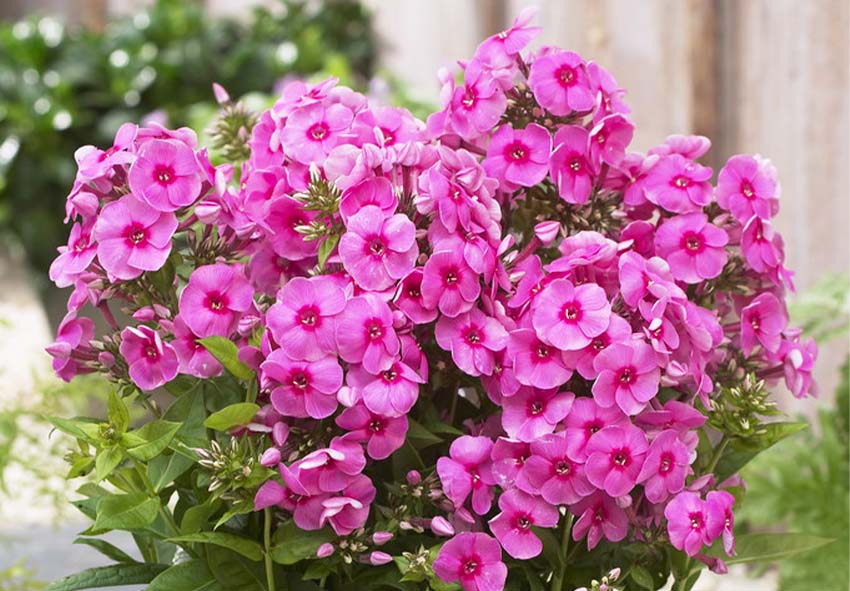
Phlox, belonging to the Polemoniaceae family, are known for their star-shaped, clustered flowers. They come in a variety of colors including pink, white, red, purple, and blue, and can be either annual or perennial. These flowers are not only visually appealing but also attract pollinators like bees and butterflies, enhancing your garden’s ecological health.
What Are Phlox?
Phlox are flowering plants that vary greatly in height and form. Some species, like the creeping Phlox (Phlox subulata), form low-growing mats perfect for ground cover, while others, such as the garden Phlox (Phlox paniculata), can grow up to four feet tall, making them ideal for borders and backgrounds.
Benefits of Growing Phlox
Phlox provide numerous benefits, from their aesthetic appeal to their ability to attract pollinators. They offer continuous blooms throughout the summer, adding vibrant colors to your garden. Additionally, Phlox are relatively easy to care for and can adapt to various garden conditions, making them an excellent choice for gardeners of all levels.
Choosing the Right Varieties
When choosing Phlox varieties, consider your garden’s conditions and your aesthetic preferences. When selecting Phlox varieties for your garden, consider the following factors:
- Climate Suitability: Choose varieties that thrive in your local climate. Some Phlox varieties are better suited for colder climates, while others do well in warmer regions.
- Height and Spread: Consider the mature height and spread of the Phlox variety to ensure it fits well in your garden space. Tall varieties are ideal for the back of borders, while shorter types work well in front or as ground cover.
- Flower Color: Phlox comes in a range of colors, including white, pink, red, purple, and blue. Select colors that complement your existing garden palette.
- Bloom Time: Choose varieties with different bloom times to ensure continuous color in your garden throughout the growing season. Some Phlox bloom in early spring, while others flower in summer or fall.
- Fragrance: If fragrance is important to you, select varieties known for their strong, pleasant scent. Many Phlox varieties are prized for their sweet-smelling flowers.
- Light Requirements: Match the variety’s light needs with your garden’s conditions. Some Phlox varieties prefer full sun, while others tolerate partial shade.
- Soil Preferences: Ensure the chosen variety is compatible with your garden’s soil type and pH level. Most Phlox varieties prefer well-draining soil with a slightly acidic to neutral pH.
By considering these factors, you can choose the right Phlox varieties that will thrive in your garden and provide beautiful, long-lasting blooms.
Popular Varieties of Phlox
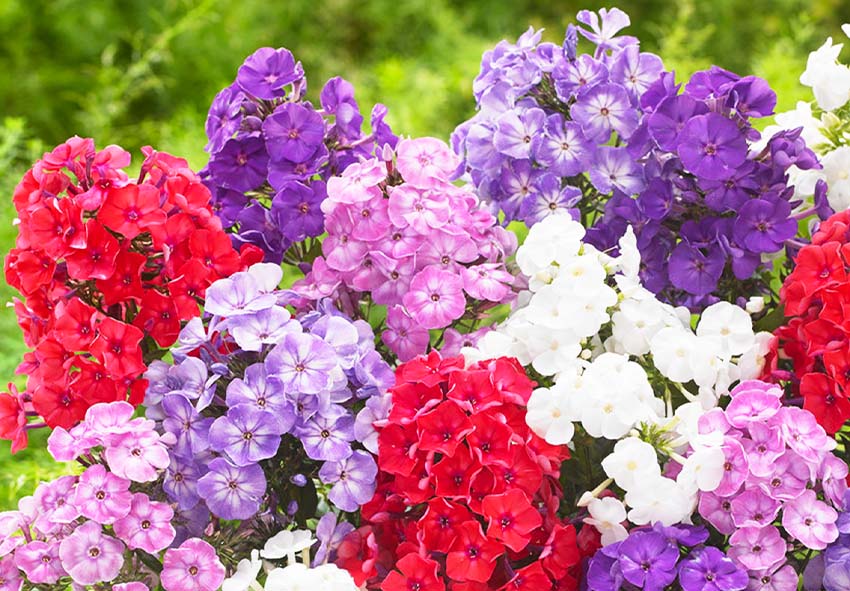
There are several popular varieties of Phlox to choose from:
| Variety Name | Color | Bloom Time | Fragrance | Soil Preferences |
| Phlox paniculata ‘David’ | White | Mid to late summer | Yes | Well-draining, slightly acidic to neutral soil |
| Phlox subulata ‘Emerald Pink’ | Pink with red eye | Early spring | No | Well-draining, slightly acidic to neutral soil |
| Phlox stolonifera ‘Blue Ridge’ | Blue | Late spring to early summer | Yes | Moist, well-draining, slightly acidic soil |
| Phlox paniculata ‘Laura’ | Purple with white eye | Mid to late summer | Yes | Well-draining, slightly acidic to neutral soil |
| Phlox subulata ‘Candy Stripe’ | Pink and white | Early spring | No | Well-draining, slightly acidic to neutral soil |
Planting Phlox
Proper planting is crucial for the healthy growth of Phlox. By selecting the right varieties and planting them correctly, you can ensure robust growth and abundant blooms.
When and Where to Plant Phlox
Phlox should be planted in early spring or fall. Choose a location with well-draining soil and ample sunlight, though some varieties can tolerate partial shade. Ensure the area has good air circulation to prevent fungal diseases.
Soil and Light Requirements
Phlox thrive in rich, well-draining soil with a pH between 6.0 and 8.0. They require full sun to partial shade, with at least six hours of sunlight daily. In hotter climates, some afternoon shade can help prevent stress on the plants.
Step-by-Step Planting Instructions
Here are some basic steps for planting Ploxes in your garden:
- Prepare the Soil: Enrich the soil with compost or organic matter to improve fertility and drainage.
- Dig the Holes: Dig holes twice as wide as the root ball and to a depth that allows the top of the root ball to sit just below the soil surface.
- Plant the Phlox: Place the Phlox in the holes, ensuring they are evenly spaced according to their mature size.
- Fill and Water: Fill the holes with soil, gently firming it around the roots. Water thoroughly to help settle the soil and establish the plants.
Growing Phlox
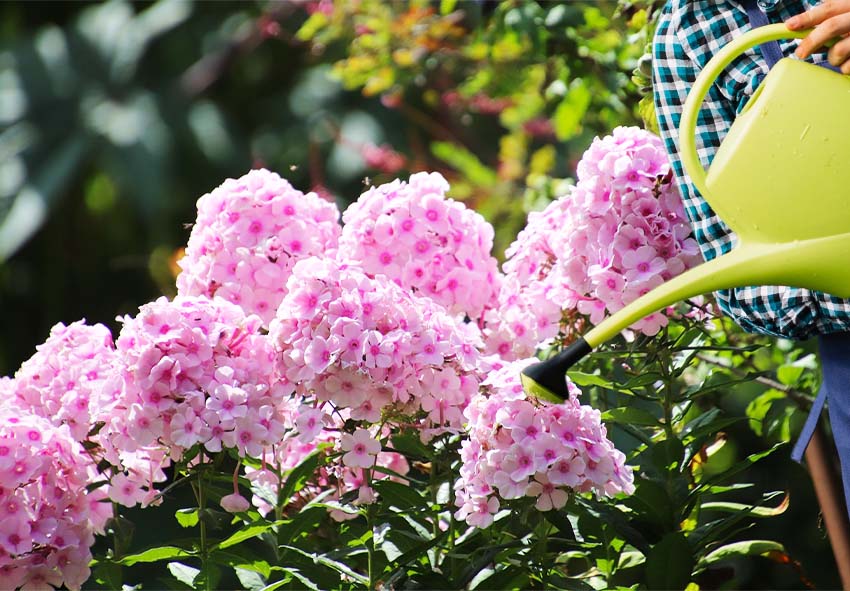
Growing Phlox is a rewarding experience that can add vibrant colors and lush greenery to any garden. Understanding the specific needs of Phlox in terms of watering, fertilizing, soil maintenance, and pruning is crucial for ensuring their healthy growth and abundant blooms. This section will provide detailed guidelines on how to nurture your Phlox plants effectively.
Watering Needs
Proper watering is essential for Phlox, especially during their active growth stages. In general, Phlox require about 1 inch of water per week. It’s important to water deeply, ensuring the moisture reaches the root zone. During periods of dry weather, increase the frequency of watering. Avoid overhead watering to prevent fungal diseases; instead, water at the base of the plants.
Fertilizing Phlox
Phlox benefit from a balanced, slow-release fertilizer applied in early spring. A 10-10-10 or 5-10-5 fertilizer is ideal. Apply the fertilizer according to the package instructions, and consider a second application after the first wave of blooms to encourage a second bloom cycle. Organic options like compost or well-rotted manure can also provide necessary nutrients while improving soil health.
Mulching and Soil Maintenance
Mulching is crucial for maintaining soil moisture and preventing weeds. Apply a 2-3 inch layer of organic mulch, such as shredded bark or compost, around the base of the plants. This will help keep the soil cool and retain moisture. Additionally, mulch breaks down over time, enriching the soil with organic matter. Be sure to leave a small gap around the stems to prevent rot.
Pruning and Deadheading
Regular pruning and deadheading are essential for keeping Phlox healthy and encouraging prolonged blooming. Deadhead spent blooms by cutting back to the first set of healthy leaves to stimulate new flower production. In late fall, after the foliage has died back, cut the stems down to a few inches above the ground. This helps reduce the risk of disease and prepares the plant for the next growing season.
Caring for Phlox
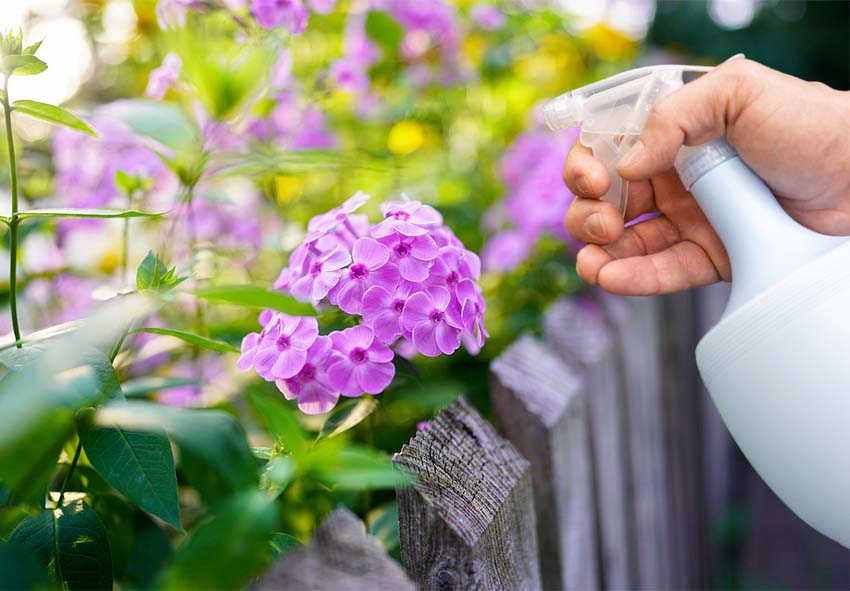
Proper care is essential for maintaining the health and beauty of your Phlox plants throughout the growing season. This involves managing pests and diseases, preparing the plants for winter, and knowing when and how to divide and transplant them. Here, you’ll find comprehensive tips and techniques for keeping your Phlox thriving.
Winter Care for Phlox
To protect Phlox during winter, especially in colder climates, apply a layer of mulch after the ground has frozen. This helps insulate the roots from extreme temperature fluctuations. In spring, remove the mulch gradually as the weather warms up to prevent fungal growth.
Dividing and Transplanting Phlox
Dividing Phlox every 3-4 years prevents overcrowding and promotes healthy growth. The best time to divide Phlox is in early spring or late summer. Dig up the entire plant, carefully separate the root clumps with a sharp knife or spade, and replant the divisions immediately in well-prepared soil. Water thoroughly after transplanting to help the plants establish in their new location.
Pest and Disease Management
Phlox plants are generally robust, but they can fall victim to several common pests and diseases. Common pests include aphids, spider mites, slugs, snails, and caterpillars. Aphids are small, sap-sucking insects that can cause distorted growth and transmit diseases, while spider mites are tiny, spider-like pests that cause yellowing and stippling of leaves. Slugs and snails leave holes and trails of slime as they feed on the leaves and flowers, and caterpillars chew on leaves and flowers, causing noticeable damage.
Common diseases affecting Phlox include powdery mildew, downy mildew, root rot, and leaf spot. Powdery mildew manifests as white, powdery spots on leaves and stems, while downy mildew causes yellow spots on leaves and a downy growth on the undersides. Root rot, often due to overly wet soil, leads to decayed roots and plant decline, and leaf spot causes brown or black spots on the leaves due to fungal or bacterial infections.
Recommendations
Here are some useful recommendations for your pest and disease management:
- Regular Monitoring: Inspect your Phlox plants regularly for early signs of pests and diseases. Early detection can help you address problems before they become severe.
- Proper Watering: Avoid overwatering your Phlox, as excessive moisture can lead to root rot. Ensure the soil is well-draining.
- Good Air Circulation: Plant Phlox with adequate spacing to promote good air circulation, which helps prevent fungal diseases like powdery mildew.
- Natural Predators: Encourage natural predators such as ladybugs and predatory beetles in your garden to help control aphid and spider mite populations.
- Organic Solutions: Use organic solutions like neem oil or insecticidal soap to treat infestations. These options are less harmful to beneficial insects and the environment.
- Clean Garden Practices: Remove and dispose of infected plant debris to prevent the spread of diseases.
- Crop Rotation: Avoid planting Phlox in the same location year after year to reduce the risk of soil-borne diseases.
By following these recommendations, you can help keep your Phlox plants healthy and vibrant, ensuring they thrive in your garden.
Encouraging Blooming
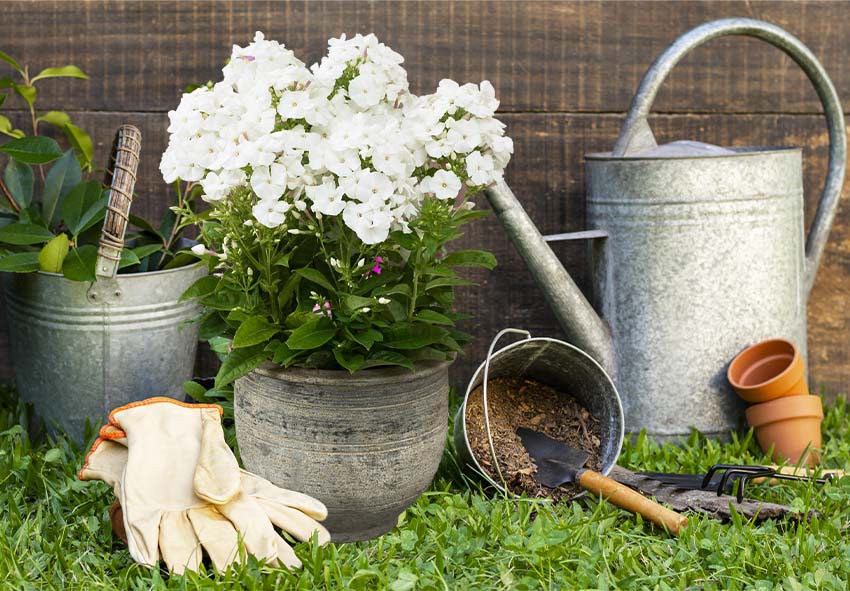
Maximizing the blooms of your Phlox plants involves more than just basic care for Phloxes after planting. It requires specific strategies to enhance the number and size of the flowers, as well as providing support for taller varieties to prevent lodging. This section offers practical advice to help you achieve the most stunning floral displays.
Maximizing Blooms
To maximize the number and size of Phlox blooms, follow these tips:
- Fertilize Appropriately: Use a balanced fertilizer in early spring and a low-nitrogen fertilizer as the plants start to bloom to encourage flower production.
- Provide Adequate Sunlight: Ensure Phlox receives at least six hours of direct sunlight daily, as insufficient light can lead to fewer blooms.
- Regular Deadheading: Remove spent flowers to encourage continuous blooming and prevent the plant from expending energy on seed production.
- Proper Watering: Keep the soil consistently moist but not waterlogged, especially during the blooming period.
Supporting Tall Phlox Varieties
Tall Phlox varieties can sometimes become top-heavy and prone to lodging. Insert stakes or plant supports early in the growing season when the plants are still small. This helps guide growth and provides necessary support as the plants grow taller. Use Plant Rings or Cages. These provide a broader base of support and help keep the stems upright. Use soft plant ties or garden twine to secure the stems to stakes or supports. Avoid tying too tightly to prevent damaging the stems.
Creative Uses for Phlox
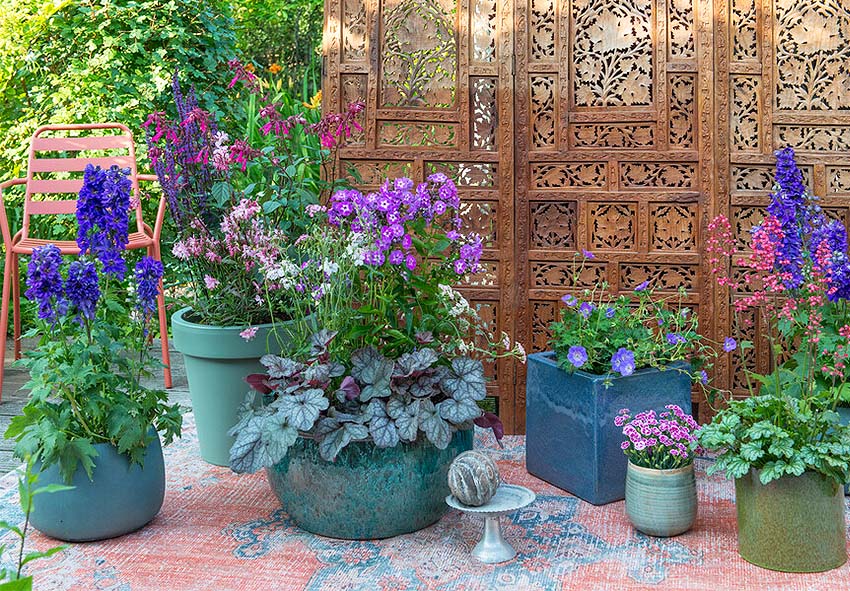
Phlox flowers are not only beautiful in the garden but also versatile in their uses. From creating striking floral arrangements to serving as effective ground covers and companion plants, Phlox can enhance your garden in numerous ways. Discover creative ideas for incorporating Phlox into various aspects of your garden design.
Phlox in Floral Arrangements
Phlox blooms make beautiful additions to floral arrangements. Here are some ideas:
- Mix with Other Flowers: Combine Phlox with roses, lilies, and daisies for a vibrant, mixed bouquet.
- Single Color Themes: Use a single color variety of Phlox to create a cohesive and elegant arrangement.
- Complementary Foliage: Add greenery like ferns or hosta leaves to highlight the Phlox blooms.
Phlox as Ground Cover
Phlox can be an excellent ground cover option due to its dense growth and colorful flowers. Phlox helps prevent soil erosion on slopes and hillsides. The dense foliage shades out weeds, reducing maintenance. Space plants closely together to create a carpet-like effect. Creeping Phlox varieties are especially effective for ground cover.
Companion Planting with Phlox
Companion planting enhances Phlox growth and garden aesthetics. Best companion plants include roses, hostas and coneflowers. Phlox and roses create a classic, romantic garden look. The broad leaves of hostas provide a striking contrast to Phlox blooms. Both plants thrive in similar conditions and together create a vibrant, pollinator-friendly garden.
Conclusion
Phlox are a beautiful and versatile addition to any garden, offering a range of colors and forms to suit various garden styles. By following the tips and techniques outlined in this guide, you can successfully plant, grow, and care for Phlox, ensuring your garden remains vibrant and healthy throughout the seasons.
Frequently Asked Questions (FAQs) about Phlox
1. How much sunlight do Phlox plants need?
Phlox plants thrive in full sun to partial shade. Most varieties prefer at least six hours of direct sunlight daily to ensure robust growth and abundant blooms.
2. How often should I water my Phlox plants?
Water your Phlox regularly to keep the soil consistently moist but not waterlogged. During dry periods, ensure that the plants receive about 1 inch of water per week. Be careful not to overwater, as this can lead to root rot.
3. How can I prevent powdery mildew on my Phlox?
To prevent powdery mildew, ensure your Phlox plants have good air circulation by spacing them properly. Water at the base of the plants rather than overhead to keep the foliage dry, and consider using a fungicide if you notice early signs of mildew.
4. Can Phlox be grown in containers?
Yes, Phlox can be successfully grown in containers. Choose a large pot with good drainage, use a high-quality potting mix, and place the container in a location that receives plenty of sunlight. Ensure the soil stays consistently moist, and fertilize regularly for best results.
5. Can Phlox bulbs be ordered from your online store?
Of course! Our online store Dutch-bulbs.com offers a wide selection of Phlox bulbs in various colors, making it easy for you to add these elegant beauties to your garden. We source our bulbs from reputable growers to ensure you receive high-quality specimens. Simply browse our online catalog, select your preferred varieties, and follow the easy ordering process.
Published: 25.06.2024
